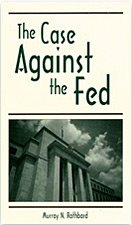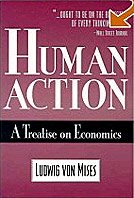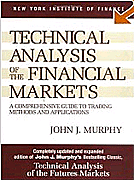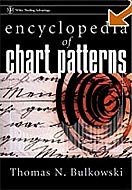Antal Fekete: Peak Gold! - A Primer on True Hedging, Part Four
Concluding his four-part series "Peak Gold," hard-money economist Antal Fekete notes that Barrick Gold's two top executives just sold a lot of shares in the company even as they were predicting a big decline in worldwide gold production and a corresponding rise in gold's price. Fekete says this is a repudiation of Barrick's hedging practices and shows that Barrick's crew is getting in the lifeboats before their passengers, the shareholders, do.
Note: for Part I please click HERE,
for Part II HERE,
and for Part III HERE
Note: for Part I please click HERE,
for Part II HERE,
and for Part III HERE
Antal E. Fekete
Gold Standard University Live
aefekete@hotmail.com
„A hedged gold mine is a hole in the ground with a liar standing next to it”
(With apologies to Mark Twain for refining his aphorism)
(With apologies to Mark Twain for refining his aphorism)
Putting the cart before the horse
As discussed in Part One, a most unusual conference call took place on August 3 last. Barrick President Greg Wilkins and Executive Vice President and CFO Jamie Sokalsky officially proclaimed Peak Gold! by disclosing that according to research commissioned by the company world gold production has peaked and will decline from now on. They suggested that we might expect a 10 to 15% drop in overall mine supply of gold within the next five to seven years, with obvious positive implications for the gold price. This was widely reported in the financial press.
What makes the announcement highly unusual, not to say suspect, is the fact that industry-leader Barrick still has 9,5 million gold ounces worth of open hedges and will suffer accordingly in the rising-price environment. It is just not logical, and even appears masochistic, to make such an upbeat announcement about the gold price first, and lift the hedges afterwards (as it is the destiny of all hedges to be lifted ultimately).
Since the company was in possession of such an explosive information impacting the gold price, the logical procedure should have been to lift the hedges first, and to release the report afterwards. The reverse-order procedure could hurt the company financially, hurting shareholders even more. Could it be that the top brass of the company has a hidden agenda and treats shareholders as dummies who do not understand the negative impact on the hedge book of a positive spin on the gold price by putting it even deeper under water?
Captain and mate, first in the life boat
Well, we did not have to wait too long for the solution to the puzzle. On September 9 President Greg Wilkins exercised 100,000 options for company shares at $27.30 each and sold all these shares the same day at prices ranging from $38.30 to $38.80. Next day, on September 10, executive vice president and chief financial officer Jamie Sokalsky turned up, and exercised 35,000 options for company shares at $23.80 each. Then, between September 10 and 14, he exercised 90,900 more options for company shares at prices ranging from $29.20 to $30.70 each. He sold all these shares the same day at prices ranging from $36.70 to $36.74, thereby reducing his total company holdings to zero. Total company holdings of president Wilkins was brought back to the original 47,500 shares according to the Canadian newspaper National Post, September 17 and 18, 2007. After all, it is fitting that the president of a company own at least a few shares in the company, however reluctantly.
It is hard to escape the conclusion that the captain and his mate want to be the first to claim their seats in the life boat, ahead of women and children. By releasing that most optimistic report Wilkins and Sokalsky jacked up the share price artificially so that they could exercise their options, only to sell the shares right away while selling was still good and leave shareholders to their fate. If the share price collapses thereafter, too bad. The main thing is that captain and mate were home safe. Shareholders can be Barricked.
The sight of the captain and his mate grabbing the first seats in the life boat ahead of women and children is repulsive enough. But it is impossible to find the right words to express moral indignation if we consider that the mate is personally responsible for the calamity awaiting shareholders aboard the badly damaged ship, caused by the insane hedging policy of Barrick.
As reported in this column, I have challenged Sokalsky to explain why he had failed to heed my warning ten years ago that the unilateral hedging policy of the company is not only false but extremely dangerous for a gold mining company, in view of the 100% mortality rate of irredeemable currencies. I also gave him a copy of my 50-page memorandum entitled Gold Mining and Hedging — Will Hedging Kill the Goose to Lay the Golden Egg? which spelled out that there was such a thing as bilateral hedging. It is harmless and potentially just as profitable even in a bear market as unilateral hedging, if not more profitable. Above all, it is true hedging as opposed to false hedging.
My challenge has been ignored. Now we know why. Sokalsky and his boss were busy bailing out. Is S.S. Barrick sinking after hitting the iceberg of $700 gold? Time will tell. The ship is certainly badly damaged by the collision. The question Barrick shareholders must ask themselves is whether it is wise to entrust their fortunes to a heavily hedged company whose chief financial officer has just reduced his own exposure as a shareholder to zero and, together with the CEO, apparently has better ideas where to park his money. The case for owning Barrick shares speaks for itself.
In Part Three of this series I have explained the extremely precarious financial position of Barrick due to its 9,5 million ounces of open hedges, already deep under water, in a rising gold-price environment. Barrick’s strategy is built upon the assumption, spelled out in the company’s last Annual Report, namely, that gold lease rates remain stable. This assumption has now been fatally shaken by events in the gold market during the past couple of weeks. The specter of the supply of lease gold drying up looms large in the horizon. In consequence lease rates could explode, making one ounce of gold in hand worth several ounces in the bush (that is, locked up in ore reserves). There is no way to hedge against the risk that demand for cash gold will surpass supply of gold for lease. It is totally irrelevant what Barrick says about the flexibility of its arrangements with the bullion banks. Barrick’s capital may turn out to be insufficient while bleeding gold in delivering mine output into the hedgebook for nothing. It is entirely possible that we are witnessing danse macabre, the last contango for Barrick. Backwardation of gold remains an enormous threat to Barrick’s survival. After all, Messrs. Wilkins and Sokalsky should know best. They don’t want to own Barrick shares. They have voted. With their feet.
DISCLAIMER AND CONFLICTS
THE PUBLICATION OF THIS ARTICLE IS SOLELY FOR YOUR INFORMATION AND ENTERTAINMENT. THE AUTHOR IS NOT SOLICITING ANY ACTION BASED UPON IT, NOR IS HE SUGGESTING THAT IT REPRESENTS, UNDER ANY CIRCUMSTANCES, A RECOMMENDATION TO BUY OR SELL ANY SECURITY. HE HAS NO POSITION, LONG OR SHORT, IN BARRICK STOCK, NOR DOES HE INTEND TO ACQUIRE ONE. THE CONTENT OF THIS ARTICLE IS DERIVED FROM INFORMATION AND SOURCES BELIEVED TO BE RELIABLE, BUT THE AUTHOR MAKES NO REPRESENTATION THAT IT IS COMPLETE OR ERROR-FREE, AND IT SHOULD NOT BE RELIED UPON AS SUCH.
References:
A.E.Fekete, Peak Gold! Part Two , September 10, 2007.
A.E:Fekete, Peak Gold! Part Three , September 19, 2007.
September 20, 2007
As discussed in Part One, a most unusual conference call took place on August 3 last. Barrick President Greg Wilkins and Executive Vice President and CFO Jamie Sokalsky officially proclaimed Peak Gold! by disclosing that according to research commissioned by the company world gold production has peaked and will decline from now on. They suggested that we might expect a 10 to 15% drop in overall mine supply of gold within the next five to seven years, with obvious positive implications for the gold price. This was widely reported in the financial press.
What makes the announcement highly unusual, not to say suspect, is the fact that industry-leader Barrick still has 9,5 million gold ounces worth of open hedges and will suffer accordingly in the rising-price environment. It is just not logical, and even appears masochistic, to make such an upbeat announcement about the gold price first, and lift the hedges afterwards (as it is the destiny of all hedges to be lifted ultimately).
Since the company was in possession of such an explosive information impacting the gold price, the logical procedure should have been to lift the hedges first, and to release the report afterwards. The reverse-order procedure could hurt the company financially, hurting shareholders even more. Could it be that the top brass of the company has a hidden agenda and treats shareholders as dummies who do not understand the negative impact on the hedge book of a positive spin on the gold price by putting it even deeper under water?
Captain and mate, first in the life boat
Well, we did not have to wait too long for the solution to the puzzle. On September 9 President Greg Wilkins exercised 100,000 options for company shares at $27.30 each and sold all these shares the same day at prices ranging from $38.30 to $38.80. Next day, on September 10, executive vice president and chief financial officer Jamie Sokalsky turned up, and exercised 35,000 options for company shares at $23.80 each. Then, between September 10 and 14, he exercised 90,900 more options for company shares at prices ranging from $29.20 to $30.70 each. He sold all these shares the same day at prices ranging from $36.70 to $36.74, thereby reducing his total company holdings to zero. Total company holdings of president Wilkins was brought back to the original 47,500 shares according to the Canadian newspaper National Post, September 17 and 18, 2007. After all, it is fitting that the president of a company own at least a few shares in the company, however reluctantly.
It is hard to escape the conclusion that the captain and his mate want to be the first to claim their seats in the life boat, ahead of women and children. By releasing that most optimistic report Wilkins and Sokalsky jacked up the share price artificially so that they could exercise their options, only to sell the shares right away while selling was still good and leave shareholders to their fate. If the share price collapses thereafter, too bad. The main thing is that captain and mate were home safe. Shareholders can be Barricked.
The sight of the captain and his mate grabbing the first seats in the life boat ahead of women and children is repulsive enough. But it is impossible to find the right words to express moral indignation if we consider that the mate is personally responsible for the calamity awaiting shareholders aboard the badly damaged ship, caused by the insane hedging policy of Barrick.
As reported in this column, I have challenged Sokalsky to explain why he had failed to heed my warning ten years ago that the unilateral hedging policy of the company is not only false but extremely dangerous for a gold mining company, in view of the 100% mortality rate of irredeemable currencies. I also gave him a copy of my 50-page memorandum entitled Gold Mining and Hedging — Will Hedging Kill the Goose to Lay the Golden Egg? which spelled out that there was such a thing as bilateral hedging. It is harmless and potentially just as profitable even in a bear market as unilateral hedging, if not more profitable. Above all, it is true hedging as opposed to false hedging.
My challenge has been ignored. Now we know why. Sokalsky and his boss were busy bailing out. Is S.S. Barrick sinking after hitting the iceberg of $700 gold? Time will tell. The ship is certainly badly damaged by the collision. The question Barrick shareholders must ask themselves is whether it is wise to entrust their fortunes to a heavily hedged company whose chief financial officer has just reduced his own exposure as a shareholder to zero and, together with the CEO, apparently has better ideas where to park his money. The case for owning Barrick shares speaks for itself.
In Part Three of this series I have explained the extremely precarious financial position of Barrick due to its 9,5 million ounces of open hedges, already deep under water, in a rising gold-price environment. Barrick’s strategy is built upon the assumption, spelled out in the company’s last Annual Report, namely, that gold lease rates remain stable. This assumption has now been fatally shaken by events in the gold market during the past couple of weeks. The specter of the supply of lease gold drying up looms large in the horizon. In consequence lease rates could explode, making one ounce of gold in hand worth several ounces in the bush (that is, locked up in ore reserves). There is no way to hedge against the risk that demand for cash gold will surpass supply of gold for lease. It is totally irrelevant what Barrick says about the flexibility of its arrangements with the bullion banks. Barrick’s capital may turn out to be insufficient while bleeding gold in delivering mine output into the hedgebook for nothing. It is entirely possible that we are witnessing danse macabre, the last contango for Barrick. Backwardation of gold remains an enormous threat to Barrick’s survival. After all, Messrs. Wilkins and Sokalsky should know best. They don’t want to own Barrick shares. They have voted. With their feet.
DISCLAIMER AND CONFLICTS
THE PUBLICATION OF THIS ARTICLE IS SOLELY FOR YOUR INFORMATION AND ENTERTAINMENT. THE AUTHOR IS NOT SOLICITING ANY ACTION BASED UPON IT, NOR IS HE SUGGESTING THAT IT REPRESENTS, UNDER ANY CIRCUMSTANCES, A RECOMMENDATION TO BUY OR SELL ANY SECURITY. HE HAS NO POSITION, LONG OR SHORT, IN BARRICK STOCK, NOR DOES HE INTEND TO ACQUIRE ONE. THE CONTENT OF THIS ARTICLE IS DERIVED FROM INFORMATION AND SOURCES BELIEVED TO BE RELIABLE, BUT THE AUTHOR MAKES NO REPRESENTATION THAT IT IS COMPLETE OR ERROR-FREE, AND IT SHOULD NOT BE RELIED UPON AS SUCH.
References:
A.E.Fekete, Peak Gold! Part Two , September 10, 2007.
A.E:Fekete, Peak Gold! Part Three , September 19, 2007.
September 20, 2007
Labels: Antal Fekete, gold, market manipulation















![[Most Recent Quotes from www.kitco.com] [Most Recent Quotes from www.kitco.com]](http://www.kitco.com/images/live/t24_au_en_usoz_6.gif)
![[Most Recent Quotes from www.kitco.com] [Most Recent Quotes from www.kitco.com]](http://www.kitco.com/images/live/au_go_0030_ny.gif)
![[Most Recent Quotes from www.kitco.com] [Most Recent Quotes from www.kitco.com]](http://www.kitco.com/images/live/au_go_0365_ny.gif)
![[Most Recent Quotes from www.kitco.com] [Most Recent Quotes from www.kitco.com]](http://kitconet.com/charts/metals/silver/t24_ag_en_usoz_4.gif)

















0 ΣΧΟΛΙΑ (COMMENTS):
Post a Comment
<< Home